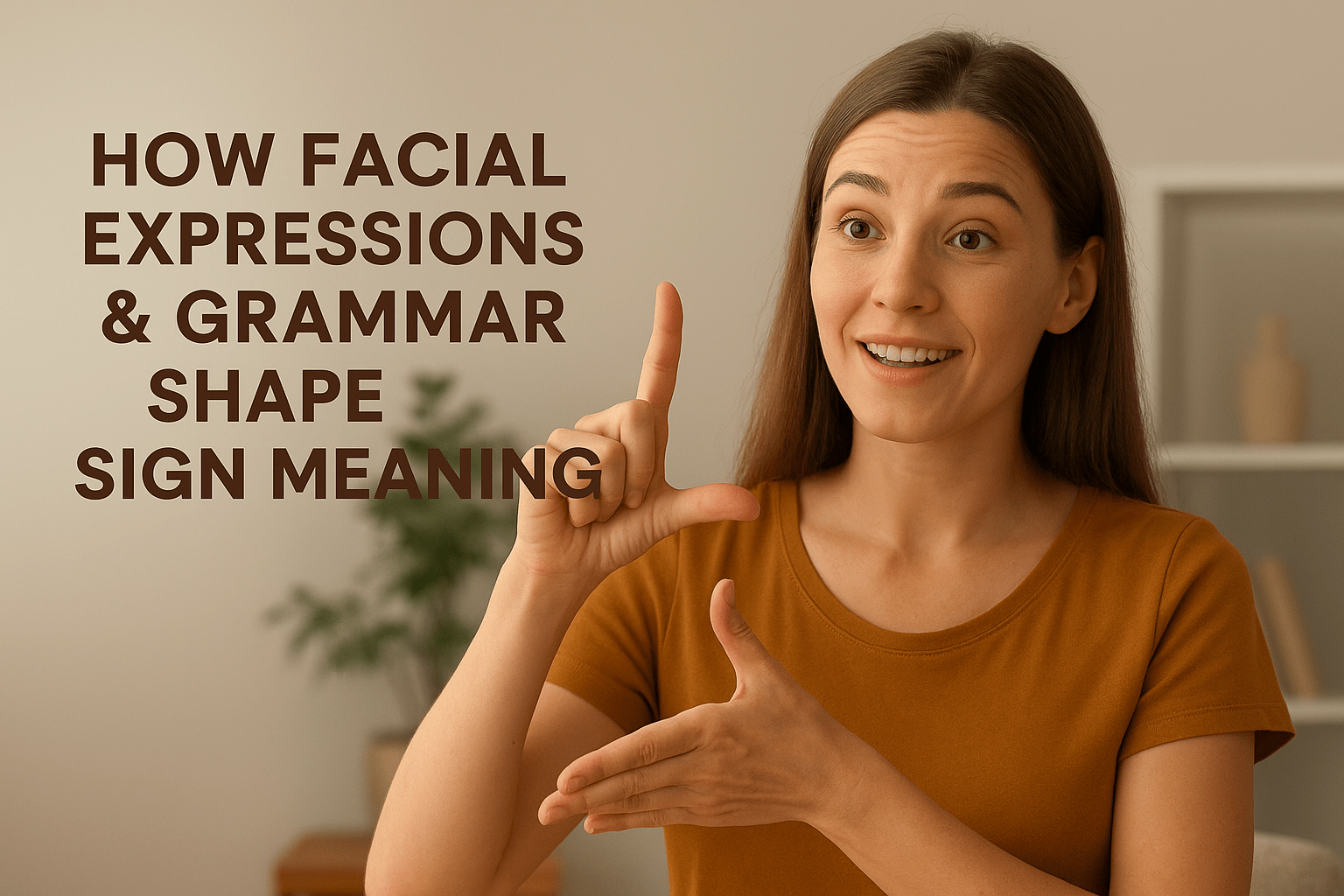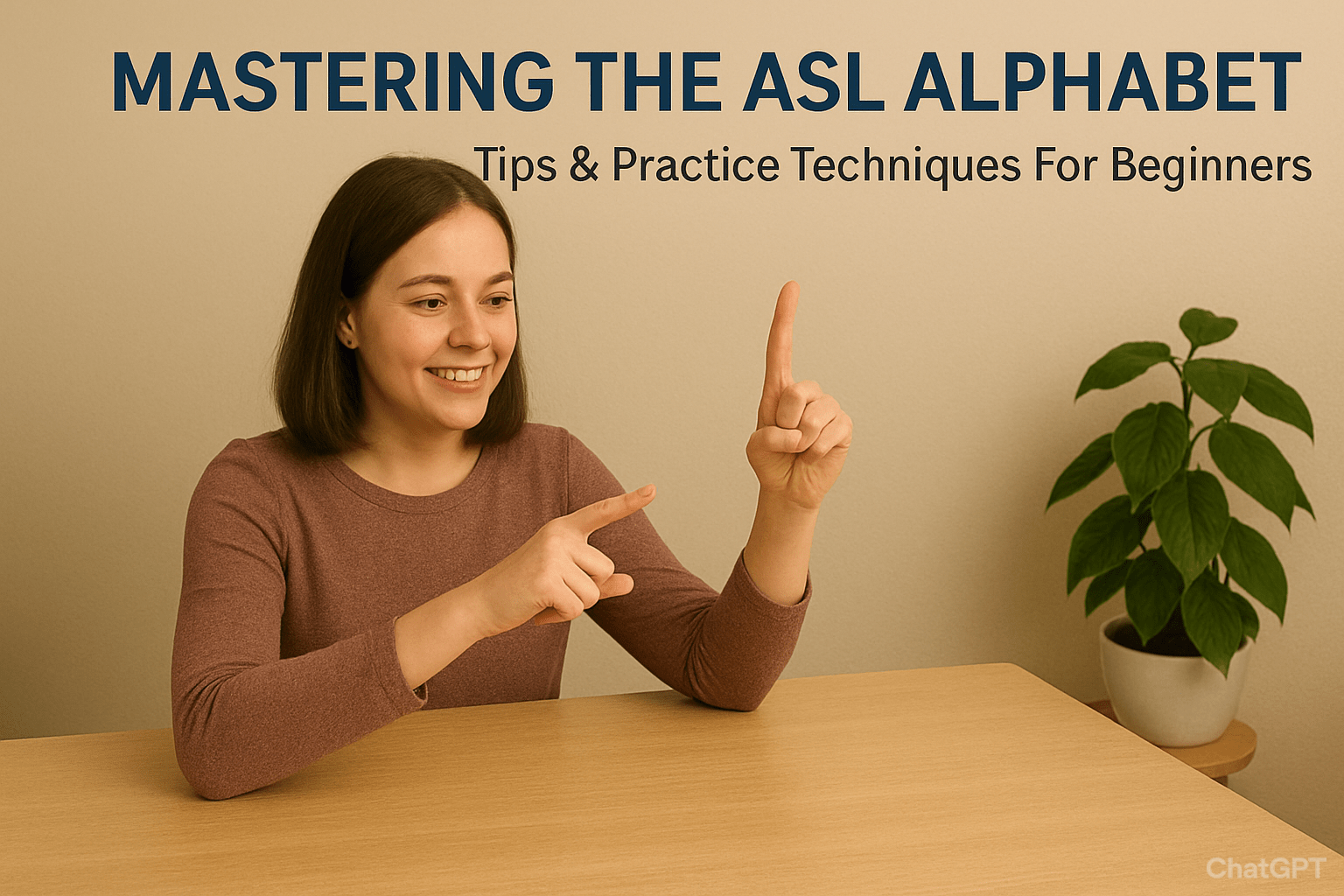If you’ve ever watched a fluent signer, you’ve probably noticed that their face says almost as much as their hands. A raised eyebrow, a head tilt, or a smile can completely change the meaning of a sign. That’s because in every sign language, including ASL and ISL, facial expressions aren’t just decoration—they’re grammar.
In this post, we’ll explore how facial expressions in sign language shape meaning, emotion, and sentence structure—and how you can start practicing them more naturally.
The Face Is Part of the Grammar
When learning to sign, many beginners focus only on hand movements. But in reality, your face, eyes, and posture are essential tools that carry grammatical information.
For instance:
- Raising your eyebrows often marks a yes/no question.
- Furrowing your brows signals a wh-question (who, what, when, where, why).
- Shaking your head can add negation (e.g., “not,” “don’t want,” “no”).
Without these facial markers, your sentence might sound confusing or incomplete—like typing without punctuation.
How Facial Expressions Add Emotion and Tone
Imagine saying “I’m fine” with a big smile versus with a sigh and slumped shoulders. The words are the same, but the meaning changes entirely.
In sign language, facial expressions work the same way. They show your tone, emotion, and intention.
Here’s how:
- Wide eyes → surprise or excitement
- Pursed lips → something is small, narrow, or minimal
- Open mouth → emphasis, shock, or intensity
- Smiling expression → warmth, friendliness, agreement
These expressions give your signing life, just like intonation does in spoken language.
The Role of Body Posture and Movement
Your body acts as a canvas for meaning. Subtle shifts can signal:
- Role changes when you’re signing dialogue between two people.
- Perspective when describing size or distance.
- Intensity when emphasizing strong emotions or actions.
Leaning forward shows engagement. Leaning back might indicate disbelief. These nuances make your communication dynamic and natural.
Common Mistakes to Avoid
Many learners struggle with expressions for two reasons:
- They’re self-conscious about “overacting.”
- They haven’t learned how to coordinate facial and hand movements together.
Here’s how to overcome it:
- Practice in front of a mirror. Focus on what your face is saying when you sign a sentence.
- Record yourself. You’ll notice patterns—maybe your eyebrows stay neutral even in questions.
- Watch native signers. Pay attention not just to their hands but their whole upper body.
Exercises to Improve Your Expression
Start small:
- Sign a neutral sentence like “I’m happy” and then change your expression to look sarcastic, sad, or surprised.
- Sign “You’re late” three different ways—angry, teasing, and understanding.
- Record both versions and compare. You’ll be amazed at how facial shifts change meaning.
To explore authentic examples, browse Sign Academy’s Sign Dictionary and observe the signer’s expressions for each entry. Notice how emotion and grammar flow together.
Facial Grammar in Different Sign Languages
Every sign language has its own facial grammar rules.
- In ASL, raised brows typically mean yes/no questions.
- In ISL, head movement can be stronger to show emphasis.
- In BSL, some adverbs like “slowly” or “carefully” rely on both mouth patterns and pacing.
This diversity is what makes the world of sign languages so expressive and unique.
Why Practice Facial Expressions Every Day
Think of your face as your voice. Without it, your message can sound monotone or unclear. Practicing facial expressions every day helps you:
- Convey emotion naturally
- Improve comprehension in Deaf conversations
- Build confidence when signing in front of others
Try combining this with video lessons—you’ll reinforce visual grammar faster. For a helpful guide, check out Using Videos Effectively to Learn Sign Language.
To Summarize…
Mastering facial expressions in sign language is like adding color to a black-and-white sketch. It turns simple signs into meaningful, emotional communication.
Don’t worry about “looking silly.” Expression is not exaggeration—it’s clarity. With time and awareness, your face will begin to move naturally in rhythm with your signs, and your fluency will blossom.
Remember: Your hands speak, but your face gives them a voice.


